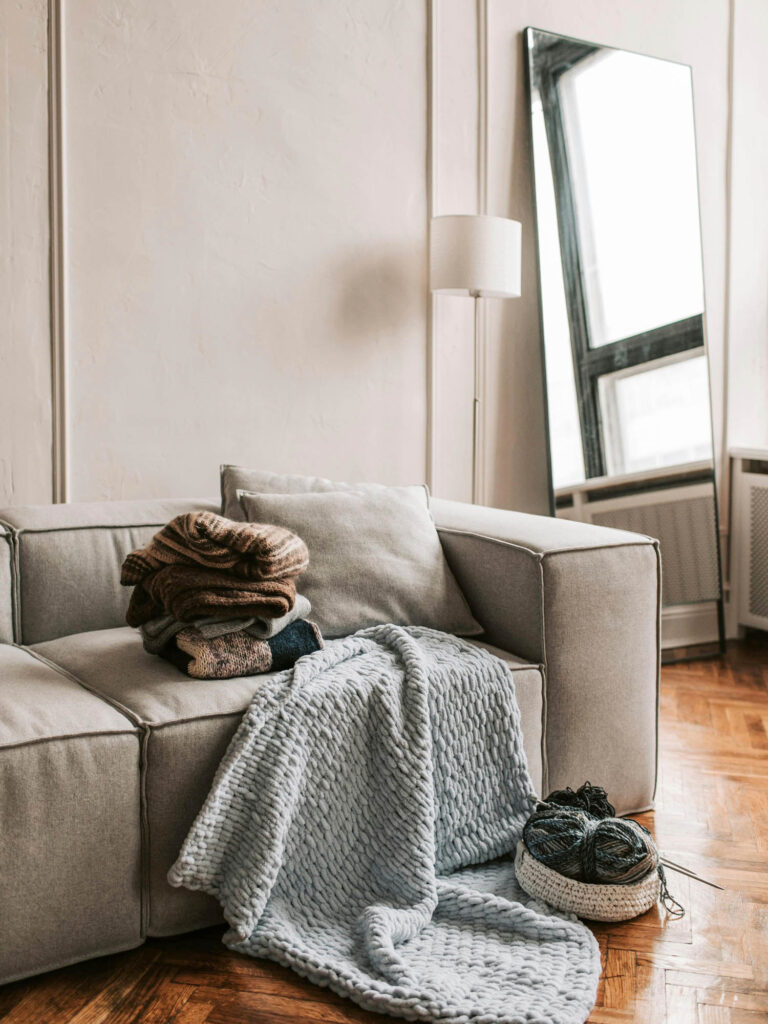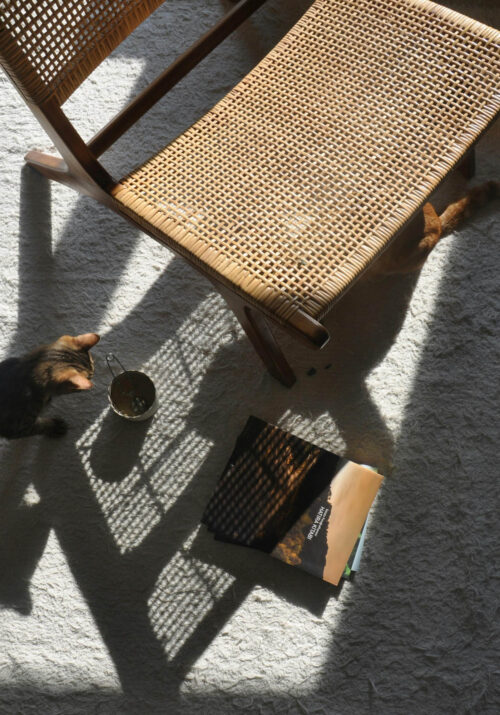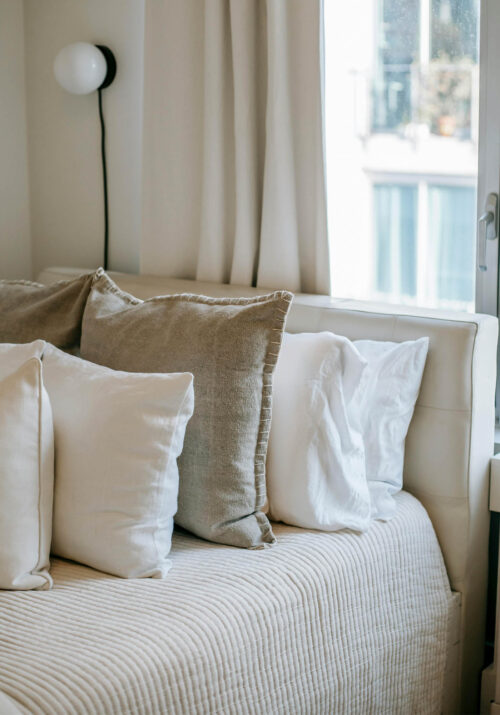Are you feeling cramped in your small living space? Don’t fret!
With a bit of creativity and strategic design, you can transform even the tiniest of rooms into a spacious oasis. Here are nine expert tips to help you expand your small space and create the illusion of spaciousness.

Pay Attention to Scale
Scale plays a pivotal role in making a room feel bigger than it actually is. Choosing furniture and decor that are proportionate to the size of the space is essential for creating a harmonious and visually appealing environment. In a small room, oversized furniture can overwhelm the space and make it feel cramped, while undersized pieces can make the room appear sparse and disjointed. Aim for furniture that fits comfortably within the room without overpowering it.
Additionally, consider the scale of decorative elements such as artwork, lighting fixtures, and accessories. By maintaining the right balance of scale throughout the room, you can create a cohesive and inviting space that feels larger and more spacious.
Embracing Light Colors: Enhancing Small Spaces
In the quest to amplify the perception of spaciousness within compact areas, the strategic choice of light colors proves paramount. Favoring gentle, neutral tones such as pristine white, soothing beige, or delicate light gray for both walls and furnishings can work wonders. These hues possess the remarkable ability to bounce off natural light, infusing the room with a sense of expansiveness and openness.
Moreover, opting to paint the ceiling in a lighter hue compared to the walls can cleverly trick the eye into perceiving greater height, thereby extending the perceived boundaries of the space even further.
Harmonize Wall, Baseboard, Crown Molding, and Ceiling Colors
To circumvent visual fragmentation that might shrink a room’s perceived size, contemplate painting walls, baseboards, crown molding, and the ceiling in a uniform hue.
This approach fosters a seamless continuity within the space, eradicating any abrupt transitions that could partition the room visually. Through the unification of all surfaces under a single color palette, you craft a cohesive visual landscape that deceives the eye into interpreting the space as more expansive than it truly is.
Maximizing Natural Light: Illuminating Space Expansion
Harnessing the transformative power of natural light can profoundly enhance the perceived spaciousness of any room. Avoid obstructing windows with heavy curtains or blinds that impede sunlight penetration. Instead, select sheer curtains or blinds that gracefully filter sunlight while preserving privacy.
To amplify the luminosity, strategically place mirrors opposite windows to capture and reflect light, ingeniously crafting the illusion of depth within the space.
Utilizing Vertical Space: Elevating Storage Solutions
In situations where floor space is at a premium, embracing verticality becomes indispensable. Channel your efforts into acquiring tall bookcases or shelving units to capitalize on vertical storage opportunities. Floating shelves emerge as a practical alternative, offering a platform for displaying decor without encroaching on precious floor space.
Furthermore, hanging curtains as near to the ceiling as feasible effectively directs the gaze upward, imparting a heightened perception of roominess and grandeur.
Maintain a Clutter-Free Environment: Enhancing Spatial Comfort
The menace of clutter has the potential to diminish the perceived expanse of even the most compact spaces. Preserve the purity of surfaces by eschewing unnecessary items, thereby creating an unobstructed visual flow.
Prioritize the acquisition of intelligent storage solutions to systematically organize belongings and conceal them from view. Embrace the utility of baskets or bins to harmoniously corral loose items, ensuring they remain tidily ensconced. It’s essential to recognize that a clutter-free environment not only visually enlarges the space but also cultivates a tranquil and hospitable ambiance.
Keep reading to uncover nine essential tips that will help you expand your small space and cleverly create the illusion of spaciousness, maximizing every inch of your home for a more open and airy feel.
Frame the Room with Curtains
One common mistake in small space design is neglecting the importance of curtains. Properly hung curtains can significantly enhance the perception of space in a room. To create the illusion of height and width, opt for curtains that are hung just a few inches down from the crown molding and extend well beyond the width of your windows. By doing so, you draw the eye upward and outward, making the walls appear taller and the windows wider. This framing effect not only adds visual interest but also contributes to the overall sense of spaciousness in the room.
So, when it comes to curtains, remember that they are more than just window dressings—they’re a crucial element in expanding your small space and creating a cohesive, well-designed environment.

Strategic Mirror Integration: Expanding Visual Horizons
Mirrors wield remarkable potential in the art of spatial manipulation. Positioning mirrors opposite windows serves as a clever tactic to harness and amplify natural light, imbuing the room with luminosity and a sense of vastness. Furthermore, contemplate incorporating mirrored furniture or decorative accents to inject depth and allure into your surroundings. However, exercise caution to avoid over-saturation—thoughtfully placed mirrors can elevate the room’s aesthetic without inundating its essence.
Zone Definition with Area Rugs: Expanding Spatial Definition
Partitioning a modest space into discernible zones holds the key to delineating distinct areas and fostering a sense of expansiveness. Area rugs emerge as invaluable assets in this endeavor, seamlessly defining zones while infusing the room with warmth and tactile richness. Opt for rugs that harmonize with your decor scheme and maintain proportionality to the room’s dimensions.
By establishing visual demarcations between different areas—be it a cozy seating enclave or an intimate dining alcove—you effectively craft the illusion of multiple rooms within a singular space. This multifaceted approach not only elevates visual allure but also imbues the room with dynamism and welcoming charm.
In conclusion, the challenge of maximizing space in a small living area can be overcome with the right approach. By implementing these nine expert tips, you can transform your compact space into a welcoming oasis that feels much larger than its dimensions suggest. From paying attention to scale and embracing light colors to utilizing vertical space and maintaining a clutter-free environment, each strategy contributes to the overall illusion of spaciousness.
Additionally, strategic mirror integration, thoughtful curtain framing, and zone definition with area rugs further enhance the visual appeal and functionality of the space. With creativity and careful planning, you can create a harmonious and inviting environment that maximizes every square inch of your small space.











